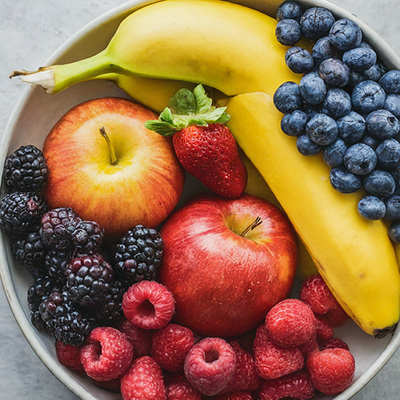Contents
- 1 The Science Behind Hiatal Hernia Surgery and Chocolate
- 2 Caffeine and Theobromine: The Stimulating Duo
- 3 Acid Reflux: The Unwelcome Guest
- 4 Straining the Surgical Site: An Unnecessary Burden
- 5 Alternative Indulgences: Sweet Satisfaction Without Compromise
- 6 Tips for Successful Healing
- 6.1 Hiatal Hernia Surgery and Chocolate: Nature’s Candy
- 6.2 Hiatal Hernia Surgery and Chocolate: A Culinary Adventure
- 6.3 Hiatal Hernia Surgery and Chocolate: Tips for Successful Healing
- 6.4 Hiatal Hernia Surgery and Chocolate: A Holistic Approach to Healing
- 6.5 Hiatal Hernia Surgery and Chocolate: Healthy Path to Recovery
Why must chocolate be banished from the post-operative diet? What secrets does this sweet indulgence hold that could jeopardize the healing process? Let us explore the fascinating connection between hiatal hernia surgery and chocolate consumption, unraveling the science behind the restriction and exploring alternative indulgences that satisfy your sweet tooth without sabotaging your recovery.
In culinary delights, chocolate reigns supreme. Its rich, velvety texture and decadent flavor tantalize taste buds worldwide. However, for those who have undergone hiatal hernia surgery, this beloved treat becomes a forbidden delicacy, a source of potential discomfort and hindered recovery.
The Science Behind Hiatal Hernia Surgery and Chocolate

Probing into physiology, we uncover the intricate interplay between chocolate consumption and the digestive system, shedding light on the reasons behind the dietary restriction following hiatal hernia surgery. At the heart of this connection lies the role of caffeine and theobromine, two compounds found abundantly in chocolate. These stimulants act as messengers within our bodies, triggering a flow of physiological responses that can disrupt the complicated balance of the digestive tract.
Caffeine and Theobromine: The Stimulating Duo
Hiatal hernia surgery and chocolate: Caffeine, a well-known stimulant, exerts its effects by adhering to receptors in the central nervous system and various other tissues. This binding triggers the release of adrenaline, a hormone that fuels the body’s “fight-or-flight” response. As adrenaline surges through the bloodstream, it activates physiological changes, including enhanced heart rate, blood pressure, and muscle contractions.
Hiatal hernia surgery and chocolate: Theobromine, a close cousin to caffeine, shares similar stimulating properties but with a milder intensity. It primarily targets the gastrointestinal tract, stimulating the muscles responsible for propelling food through the digestive system. While beneficial in normal digestion, this increased motility can exacerbate acid reflux symptoms in individuals with hiatal hernias.
Acid Reflux: The Unwelcome Guest
Acid reflux, a common complication associated with hiatal hernia, occurs when stomach acid backs up into the esophagus, causing a burning response in the chest and throat. Chocolate consumption can amplify these symptoms by stimulating stomach acid secretion while relaxing the lower esophageal sphincter. This valve prevents acid from refluxing.
Straining the Surgical Site: An Unnecessary Burden
Chocolate’s rich and decadent composition can also influence stool consistency, making bowel movements harder and more straining. This increased straining can put undue pressure on the surgical site, potentially hindering the healing process and prolonging recovery.

Alternative Indulgences: Sweet Satisfaction Without Compromise
While chocolate may be temporarily off the menu, this doesn’t mean that sweet satisfaction must be sacrificed. Embracing moderation and mindful eating, individuals can still enjoy a variety of delectable treats without compromising their recovery. Here’s a glimpse into a world of alternative indulgences:
- Hiatal Hernia Surgery and Chocolate: Naturally sweet fruits – Nature’s candy, fruits like berries, apples, and bananas provide a burst of sweetness and a wealth of nutrients.
- Hiatal Hernia Surgery and Chocolate: Homemade desserts with low-fat ingredients – Experiment with low-fat yogurt parfaits, homemade fruit popsicles, or baked apples sweetened with honey.
- Hiatal Hernia Surgery and Chocolate: Sugar-free alternatives – Indulge in sugar-free cookies or candies, ensuring they are free of artificial sweeteners that may cause digestive discomfort.
Tips for Successful Healing
Remember, adhering to dietary guidelines is not about deprivation but nurturing your body during a crucial healing phase. Here are some additional tips to promote a smooth and successful recovery:
- Hiatal Hernia Surgery and Chocolate: Communicate openly with healthcare providers and inform your healthcare team about any concerns or discomfort you experience during recovery.
- Hiatal Hernia Surgery and Chocolate: Gradual reintroduction – Once the healing process is well underway, gradually reintroduce foods, including chocolate, in small amounts to assess your tolerance.
- Hiatal Hernia Surgery and Chocolate: Prioritize overall health – Embrace a holistic approach to recovery, incorporating regular exercise, adequate sleep, and stress-management techniques.
Remember, the temporary absence of chocolate is a small price to pay for a full and speedy recovery. Embrace the journey, savor the alternative indulgences, and prioritize your total health as you embark on renewed vigor.
Hiatal Hernia Surgery and Chocolate: Nature’s Candy
Mother Nature has given us a bounty of naturally sweet fruits, each with its unique flavor profile and nutritional benefits. Berries, such as strawberries, raspberries, and blueberries, offer a delightful burst of sweetness while providing a wealth of antioxidants and fiber. With their varying textures and flavors, apples and pears provide a satisfying crunch and steady energy. Indulge in these natural delights, savoring the sweetness that nature has to offer.
Hiatal Hernia Surgery and Chocolate: A Culinary Adventure
Step into the kitchen and release your inner chef, crafting homemade desserts that are as delicious as they are nutritious. Low-fat yogurt parfaits, layered with fresh fruits, granola, and a drizzle of honey, provide a delightful balance of sweetness and protein. Experiment with homemade fruit popsicles, blending your favorite fruits with a touch of honey or agave nectar for a refreshing treat. Baked apples, infused with warming spices like cinnamon and nutmeg, offer a cozy and comforting indulgence.
Hiatal Hernia Surgery and Chocolate: Tips for Successful Healing
As you embark on the journey of recovery following hiatal hernia surgery, it’s crucial to approach your diet not as a restrictive obstacle but as a nurturing ally in the healing process. Embracing a holistic approach that encompasses open communication with healthcare providers, gradual reintroduction of foods, and prioritization of overall health will pave the way for a smooth and successful recovery.
Hiatal Hernia Surgery and Chocolate: Open Communication
Establishing open communication with your healthcare team is paramount throughout the recovery process. Don’t hesitate to voice any concerns or discomfort you experience related to your diet. Your healthcare providers are there to guide you, address your problems, and adjust your care plan as needed.
Once the healing begins, seek their advice on the appropriate timing and pace for reintroducing foods, including chocolate. They can provide specified recommendations based on your recovery progress and any unique factors influencing your tolerance to certain foods.
Hiatal Hernia Surgery and Chocolate: Gradual Reintroduction
Patience is a virtue, especially when reintroducing foods following hiatal hernia surgery. While you may be eager to reclaim your pre-surgery culinary repertoire, resist the urge to rush. Instead, adopt a gradual approach, starting with small portions of familiar foods and carefully observing your body’s response.
Begin by reintroducing foods generally gentle on the digestive system, such as fruits, vegetables, and whole grains. Monitor your tolerance for these foods before venturing into more complex or rich dishes. If you experience discomfort like heartburn, bloating, or constipation, reduce or eliminate the offending food and consult your healthcare provider.
Remember, reintroduction is a journey, not a race. Allow your body to adapt to the changes in its digestive system, and gradually expand your culinary horizons as you progress towards full recovery.
Hiatal Hernia Surgery and Chocolate: A Holistic Approach to Healing
Hiatal hernia surgery is not just about mending the physical incision; it’s about restoring your general health. Engage in regular physical activity fitted to your recovery stage and fitness level. Exercise aids in digestion and reduces stress. Aim for at least thirty minutes of moderate-intensity physical activity most days of the week.
Adequate sleep is essential for repairing and rejuvenating your body. Aim for seven to eight hours of valuable sleep each night to support optimal healing and maintain a balanced energy level during the day.
Incorporate stress-management techniques into your daily routine, such as yoga, meditation, or deep breathing exercises. Managing stress effectively can help reduce acid reflux symptoms. Remember, your body is a remarkable healing machine.
Hiatal Hernia Surgery and Chocolate: Healthy Path to Recovery

As you navigate the post-hiatal hernia surgery landscape, the temporary absence of chocolate may seem like a significant sacrifice. However, this brief hiatus from your favorite treat presents an opportunity to explore new culinary horizons and discover the sweet satisfaction of alternative indulgences, as mentioned above.
Remember, the dietary restrictions following hiatal hernia surgery are not meant to be permanent but rather serve as a temporary measure to facilitate a smooth and successful recovery. Embrace this time as an opportunity to experiment with new flavors, nourish your body with wholesome ingredients, and develop a healthier relationship with food.
Always prioritize your body’s signals and listen to its cues. If chocolate triggers discomfort or hinders your recovery, don’t hesitate to postpone its reintroduction until your body is fully healed.
Embrace the journey of alternative indulgences, savoring the symphony of sweetness nature offers, creating culinary masterpieces in your kitchen, and exploring sugar-free delights. Let your sweet tooth dance to the rhythm of healthy choices and discover a world of indulgence that supports your healing.
The path to renewed health is paved with patience, self-care, and a commitment to embrace new experiences. As you embark on this journey, correspond openly with your healthcare providers and gradually reintroduce foods into your diet with mindful awareness. With each step forward, you’ll discover a sweeter and more fulfilling life that celebrates the harmony between indulgence and wellness.
DISCLAIMER: All content on this website is presented solely for educational and informational objectives. Do not rely on the information provided as a replacement for advice, diagnosis, or treatment from a qualified medical expert. If you are pregnant, nursing, or have any preexisting medical concerns, talk to your doctor before using any herbal or natural medicines.
References
- American Society for Gastrointestinal Endoscopy (ASGE): https://www.asge.org/
- Mayo Clinic: https://www.mayoclinic.org/
